If you like to soak in the sun but prefer a more adventurous take, one of the best ways is an escape into any of the numerous deserts on our planet. Covering more than one-fifth of land on Earth, deserts can be found around the world, wherever there is less than 10 inches of rain per year. But that is not to say that these arid regions are completely bare and boring. From picturesque sand dunes to mystical salt lakes, topped with majestic oasis, dramatic mountains, spellbinding sunsets and startlingly night skies and, of course, a dose of local culture, a desert getaway can be a memorable challenge for the tough traveller. Here are our favourites!
Sahara Desert – Africa
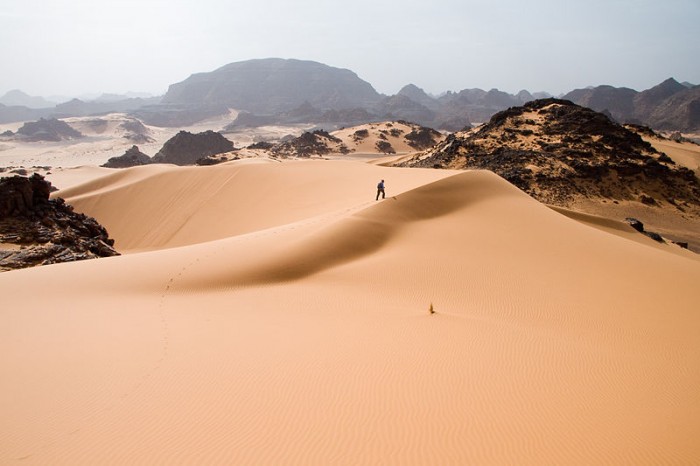 Image credit: Luca Galuzzi
Image credit: Luca Galuzzi
Ah, the Sahara. Placing the Arctic and Antarctica aside, the ‘Sahara’, which means ‘desert’ in Arabic, is by far the largest hot desert on Earth which comprises eight percent of the world’s land space. It covers large areas of Algeria, Chad, Egypt, Libya, Tunisia, Mali, Morocco, Niger, Mauritania and the Sudan. That’s enough to cover the entire Continental United States with several thousand miles left over since the Sahara is ever-expanding due to climate changes. This puts countries like Tunisia under threat of desertification.
Nevertheless, adventuring into the Sahara has always piqued the interests of many travellers around the globe. Most tours in the Sahara start from Morocco, from cities such as Marrakech, Fes and Ouarzazate. From then on, it’s a magical orange wash of sand that will never fail to keep you overwhelmed throughout the trip.
You can experience life on Sahara in places such as the Berber villages along the way to Merzouga, a village popular for its camel trekking adventures up to the sand dunes. If you’re up for a longer adventure, the 4X4 desert tours will bring you into the heart of the Saharan culture by engaging with Berber nomads and listening to Gnawa music. You can also explore the dunes of Erg Chebbi, and admire the Dades Gorge and Ziz Valley.
Don’t forget to look out for the beautiful Ksar of Ait-Ben-Haddou along the former route that trails between the Sahara and Marrakech. Avid stargazers and photographers – make sure you catch the beautiful starlit sky when night falls!
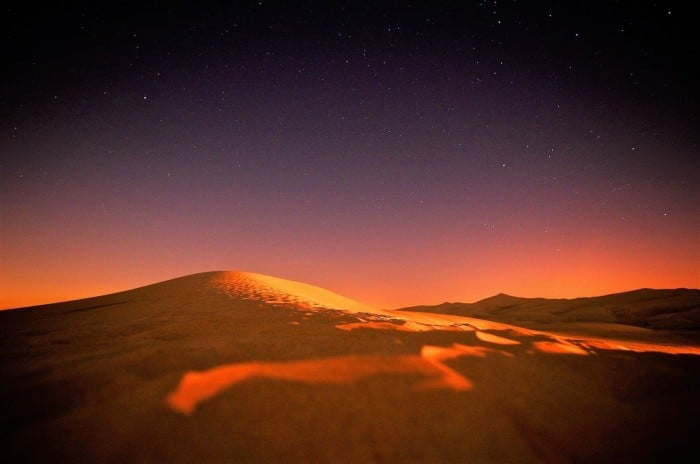
Consider turning up at Marrakech and make a booking on the spot with any of the dozens of tour packages available because you may often be charged higher for booking in advance!. Apart from Morocco, there are tours from Tunisia where you can explore the oasis towns of Chebika, Tamerza and Mides.
Gobi Desert – Mongolia
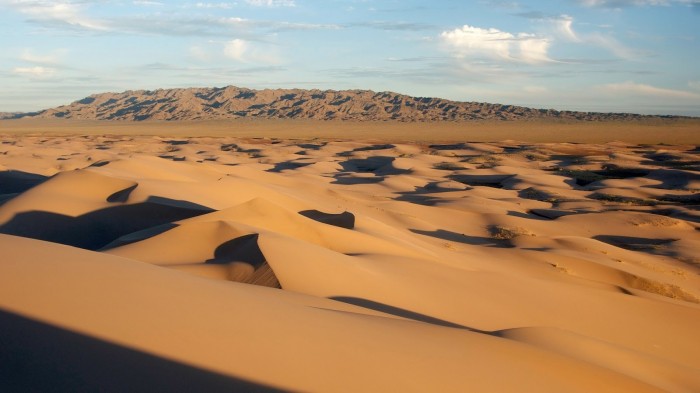
As the most expansive arid region on the Asian continent on which the first fossilised egg was found, the Gobi Desert covers areas of northern and north-western China and Southern Mongolia. A rain shadow desert as it is often called, the desert has most of its rain blocked by the Himalayas, yet it still enjoys seven inches of rainfall each year on its vastly rocky terrains. Unlike the Sahara, the Gobi Desert is blessed with a much cooler weather due to its northern location and height above the sea level, giving rise to frosted and pretty snow capped dunes. Yet, temperatures often fluctuate in great numbers within 24 hours and nights can be extremely cold with high speed winds sweeping across the desert during Spring and Fall.
Also read: 9 Adrenaline Packed Adventures to Have in Southeast Asia
Ideal for the adventurous, there will be occasional sights of the cashmere goat, the most common livestock on the rocky desert, throughout the trek. Raised for their fine hair, these goats are able to survive in the intensely harsh climate. Nevertheless, wherever there is an area of vegetation, try spotting Mongolian herders who are extremely hospitable and friendly. The Mongolian culture has an old proverb that states “Happy is the one who has guests, merry is the home boasting a tethering rail full of visitor’s horses”. Now, what is travel without engaging with the local men?
Right at the northern edge of the desert lie a blissful oasis known as the “One Hundred Trees Oasis”, especially important for herders and their livestock who stop by for food and drinking water. On the southern side, there is Ekhiingol — an isolated oasis that grows tomatoes, cucumber, watermelon and peppers sold locally since accessibility to the mainland’s markets is impossible by air and trekking can never be a viable option.
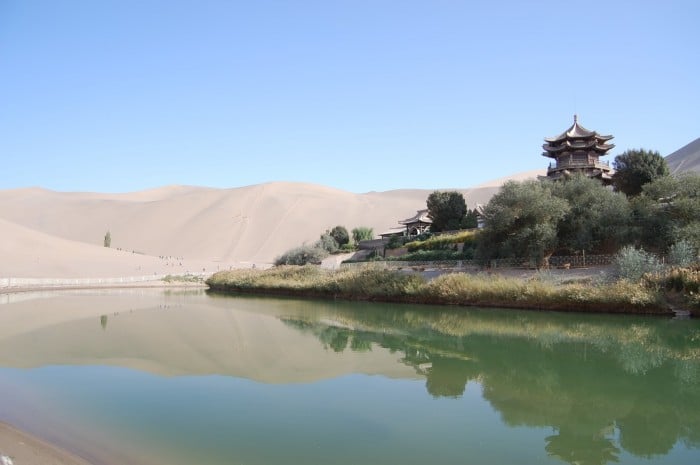 Image credit: Sigismund von Dobschütz
Image credit: Sigismund von Dobschütz
But the most popular oasis lies in the middle of the desert that dates back 2,000 years. Known as the Crescent Lake, it is regarded as a natural wonder of Gobi. The oasis, which boasts sentimental Chinese architectural influences and lush vegetation along the banks of the lake, was once faced with an intense threat of disappearing due to desertification until the Chinese government began to refill the waters. Yet, it has been argued that the real danger of the oasis being wiped out still remains.
Dasht-e-Kavir – Iran
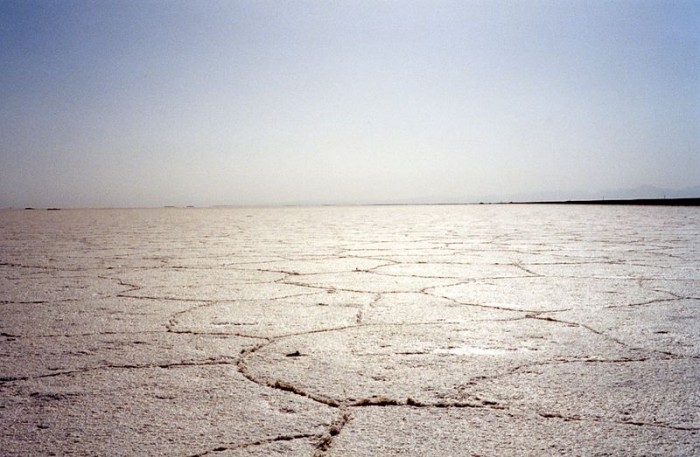 Image credit: Jeanne Menj
Image credit: Jeanne Menj
Also known as the Great Salt Desert, the Dasht-e Kavir or Kavir-e Namak (in Persian, namak is salt and kavir is salt marsh) is a large salt desert that lies in the middle of the Iranian plateau, located in a basin southeast of the Elburz Mountains. The region was once a vast salt-rich ocean million years ago that surrounded present day central Iran. After the ocean gave in to climate changes, it dried up and left behind a layer of salt known to be six to seven kilometres thick.
At the heart of the salt-massed desert is the Kavir Buzurg that is surrounded by a ring of sandy dunes that separates it from the neighbouring Kavirs. Since it receives very little moisture, water evaporates from the salt marshes leaving crusts of salt that layers above dark saline mush, otherwise recognisable as grease-like mud that Iranians call “Charbeh”. The crusts of salt are easily penetrable by travellers and the mud is extremely difficult to get out of when stuck. This thus makes journeying across the kavir dangerous! But do not freak out yet, you may still view this expansive kavir from the sandy dunes because the view is picture-perfect!
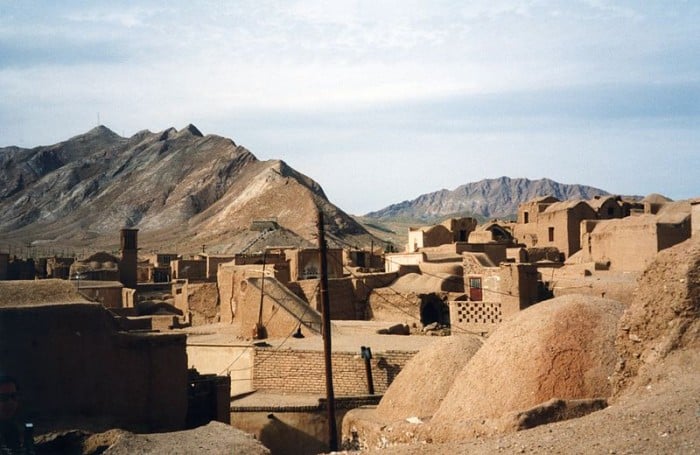 Image credit: Jeanne Menj
Image credit: Jeanne Menj
That aside, there are other things to see on Dasht-e Kavir, like a 400-year-old fortress that was built to protect camel caravans that carried goods along the Silk Road. For now, the fortress on the former Silk Road, called the caravansary, serves as a place for picnics and source of hot water. There have been talks that this fortress will be turned into a hotel!
There is also the dried salt lake and salt flats to admire, especially for their fancy geometric patterns that give the surface an aesthetic quality of its kind thanks to Mother Nature. Don’t forget the sandy dunes from which the sunset view is spectacular. Ever wondered how rolling down the dunes would be like? Visit Dasht-e Kavir to find out!
Atacama Desert – Chile
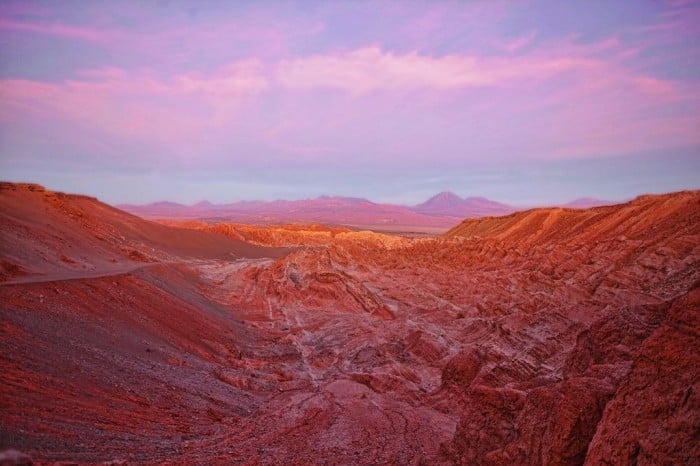 Image credit: Justin Jensen
Image credit: Justin Jensen
If the Sahara is the largest hot non-polar desert on Earth, Chile’s Atacama Desert is its driest equivalent! Its dramatic panorama captivates even the youngest traveller with its majestic red canyons and surreal salt lakes, portraying such a Martian like backdrop that the place is also used to test Mars rovers in simulations. On top of that, travellers can also cycle and admire the geysers, lagoons, lakes and gorges.
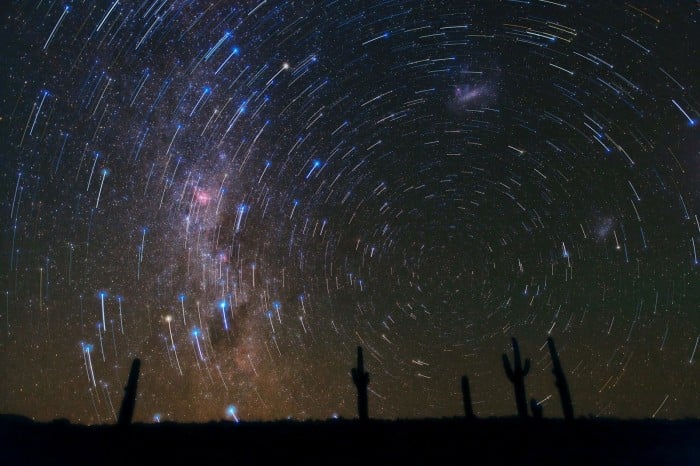 Image credit: European Southern Observatory
Image credit: European Southern Observatory
Also, Atacama Desert is the world’s foremost stargazing paradise, especially with its clean air, huge southern night skies and close-to-zero light pollution. Commonly visible are the bright Milky Way, Saturn and Jupiter, and if you’re lucky, you can spot the Magellanic clouds, which are a pair of irregular dwarf galaxies located further way in the southern hemisphere.
Heading to the village of San Pedro de Atacama has always been the popular option for those intending to explore the Atacama Desert. Within the village itself, there are a couple of interesting monuments to visit, such as the one of the oldest churches in the West that features the traditional cactus wood roof, as well as a museum that displays archaeological discoveries of the region.
Moving forward is an 11-mile drive south to the Salar de Atacama, that is Chile’s largest salt flat, a barren valley of salt hardened into hexagonal rinks or wavelike crests. Here, you may take a glimpse of the bright pink flamingos or hire a bike from town and ride through the creamy white salt landscape.
Although it has been believed that the Atacama’s dry condition prevents any sort of flora to survive unless it is able to tackle the harsh conditions, it was reported just last year that flowers began blooming, which unveiled an explosion of colour and a dazzling carpet of yellow, pink, orange and purple flowers across the arid landscape. Typically, flowers bloom every five to 10 years but such large flowering had not taken place in the last 18 years! Yet, the flowers tend to die off early November, so we’re waiting for another miracle to happen real soon!
The Outback – Australia
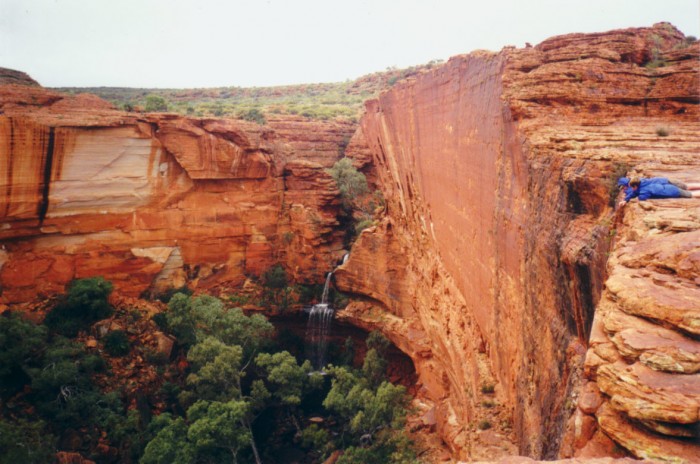 Image credit: Andrew Purdam
Image credit: Andrew Purdam
Deciding on one desert of the ten in Australia was a tough decision because they all form what it’s often called, the Australian Outback. There is no one location where the Outback starts or end for it makes up everything except for the populated cities on the southern and eastern coasts. Emptiness, remoteness and the expansive nature of inland Australia characterises this spectacular Outback.
Once on the Stuart Highway, you will be surrounded by dry empty land area. To the east is the Simpson Desert, Great Victoria Desert and Gibson Desert, to the west lie the Great Sandy Desert and there is the Tanami to the north.
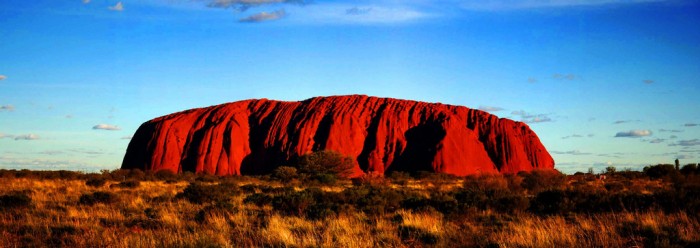 Image credit: Nicolò Bonazzi
Image credit: Nicolò Bonazzi
One of the most-visited icon is the Ayers Rock, a monolith that is 5.8 miles in circumference and 1,142 feet high. The Kata Tjuta Uluru National Park, where the rock is located, lies in the far eastern corner of the Great Sandy Desert, where it meets with another two deserts — the Gibson and Tanami.
As the sun sets on the Outback, it shines an unforgiving light on the sacred rock, unveiling a beaming red monolith — an exquisite mark of Mother Nature. It has been on the to-do list of every avid traveller to climb up to the top of the rock.
Also read: Amazing Day Hikes in Southeastern Australia
Northeast, at about 440 kilometres, is Alice Spring, otherwise known as the capital of the Outback that carries a mix of Aboriginal and European history. There are lots of things going on there. Some of them include helicopter flights to view the aerials landscapes of the Redbank Gorge, Kings Canyon and Uluru, as well as the Larapinta Trail, Simpsons Gap and Standley Chasm. Be sure to catch a view of wallabies, camels and eagles! You can also head to the historical Telegraph Station and Olive Pink Botanic Gardens, among others. There are also camel treks and a four-wheel drive to the Ranges!
Indeed, the Australia Outback is full of life and if you adventurous enough, a desert getaway across Australia could just be your next biggest challenge!
Thar Desert- India
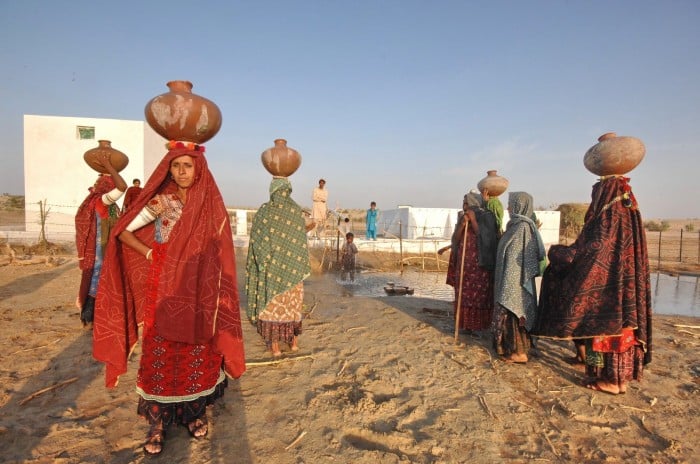 Image credit: World Bank Photo Collection
Image credit: World Bank Photo Collection
Also known as the Great Indian Desert, the Thar Desert spans an arid region of rolling sand hills that stretches across to the Punjab and Sindh provinces of Pakistan from the north-western Indian soils of Gujarat, Haryana, Punjab, and largely Rajasthan.
Now, if you’re in the state of Rajasthan, prepare to be welcomed with lots of friendly smiles, unforgettable hospitality and a vibrant splash of colours — from men in colourful turbans to women in brightly coloured flowing dresses that break the monotony of the yellow sandscape, topped with silver and brass jewellery, the lively atmosphere is one that excites many travellers. In fact, the Thar Desert is the most densely populated desert in the world, a stark contrast to the Sahara indeed.
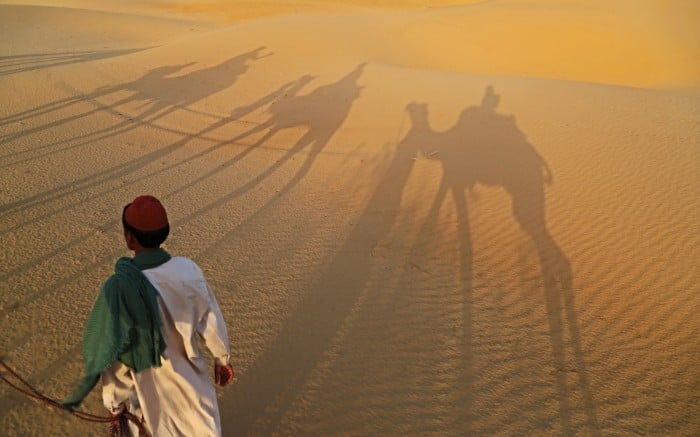 Image credit: vil.sandi
Image credit: vil.sandi
Apart from music and dance on the sand dunes till late into the night, camel tours around the desert is also increasingly popular. Be sure to capture the cultures of the various natives living there, such as the Jasthani and Bishnoi tribal people, the fauna friends like the glorious peacocks and the athletic deers, and even the Great Indian Bustard, golden fox and blackbuck.
However, do not leave until you’ve travelled to the other side of this arid land to the far Western edge of the Gujarat district of Kutch. There lies the magnificent white blanket of seasonal salt marshland known as the Great Rann of Kutch. Rann means desert in Hindi. Shimmering under the moonlight amid endless cycles of dance and music, this perfect wonder appears during the Rann Utsav. It is a celebration of the culture and festivities of Kutch and Gujarat that carries on for more than two months with vivid colours sprinkled on the barren land.
Karakum Desert – Turkmenistan
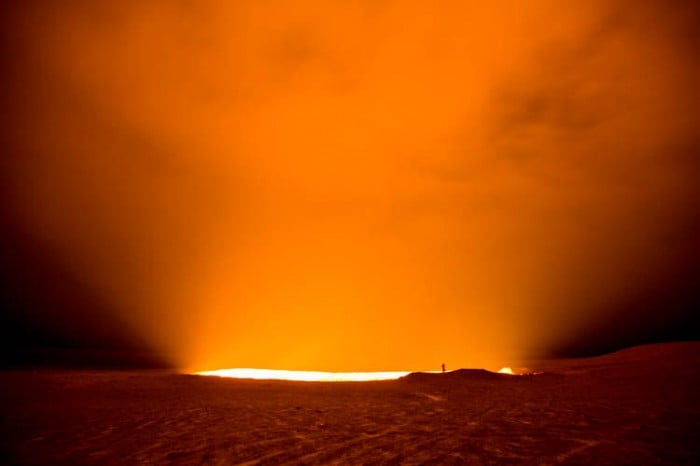 Image credit: Sunrise Odyssey
Image credit: Sunrise Odyssey
Taking up most of central Turkmenistan, the Karakum Desert is a sun-scorched region of dunes and sparse vegetation, yet it supports a few settlements including the oasis town Ashgabat.
But that aside, travellers are drawn to the Karakum Desert especially due to the Darwaza Gas Crater, more popularly known as the “The Door to Hell”. The crater has its history back to Soviet era in 1971 when Soviet geologists began drilling the site in search for oil. Instead, they tapped into a cavern filled with natural gases. Not being able to support the weight of the equipment, the entire site collapsed, swallowing all the equipment and triggering neighbouring sedimentary rocks to fall in a domino-effect. This left a humongous hole, 230-feet wide and 65-feet deep. The release of the natural gas, though not toxic, endangered the lives of the animals who made the desert their home and thus, they decided to burn them off.
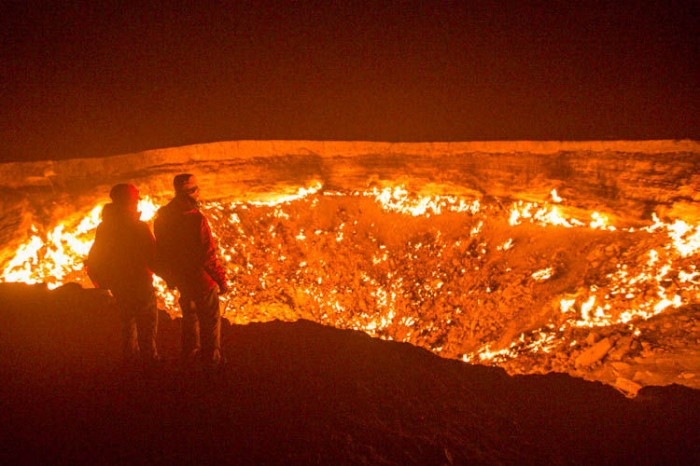 Image credit: Sunrise Odyssey
Image credit: Sunrise Odyssey
Although they hoped that the fire would burn within a few days, it still ignites till today, casting a golden glow of red flames that can be seen miles away around the village Darwaza, which means gate in Persian. Admiring the crater during the night can be overwhelmingly surreal.
Also read: An Epic Singaporean Couple Journey: 279 Days and 12 Countries For $30/Day
Apart from the outlandish crater, you can trek around the desert, and immerse yourself into the Turk culture and hospitality by being treated with Turkmen bread with chal, which is naturally fermented camel’s milk. Remember not to miss the glorious sunset and the starlight skies as night falls!
Tabernas Desert – Spain
 Image credit: Luis Daniel Carbia Cabeza
Image credit: Luis Daniel Carbia Cabeza
Situated in Almeria, the driest region of Europe, Spain’s Tabernas Desert is an area filled with badlands, eroded ravines, dried river beds and slopes bare from vegetation, save for a few pockets of subsistence farming on its poor soils. Yet, amid its harsh conditions, rabbits, lizards, snakes and rodents thrive on the desert.
At the foot of Sierra Alhamilla mountain range in between the desert to the north and the coast of Almeria to the south, lies Tabernas village. It was once a resting spot for Roman troops during their military campaigns. This tradition continued through several civilisations with many new taverns built. Now, though nothing much as changed, visitors stop by to enjoy a dose of Spanish hospitality. On a hilltop above the village is the Tabernas castle that dates back to the 11th century. For a splendid panoramic view of the desert, climbing up to the hilltop will not disappoint! Furthermore, if you’re up for it, mountain cycling on the Alhamilla will be an exciting adventure.
That aside, Tabernas is especially known to be the Hollywood of Almeria for numerous films have been shot on the desert since the 1950s. The film village of Fort Bravo is one cinematic location that bares equal resemblance, and not forgetting the aura, of the classic American films, such as the spaghetti westerns of the 60s and 70s. Remember Sergio Leone’s Dollars Trilogy? Even one of the Indian Jones movies, The Last Crusade, was filmed in Almeria! Make sure you leave with a good number of picture-poses at these star-studded silver screen backdrops!
Since the desert isn’t exactly the most comfortable place for a retreat unlike the most sought after island getaways, remember to stock up on enough food and water supplies, and the required sets of extra clothing.
So, go pick up that backpack and get into your trekking gear!





